Company Details
sap
133,175
4,379,062
5112
sap.com
27
SAP_1049751
Completed

SAP Company CyberSecurity Posture
sap.comSAP is the leading enterprise application and business AI company. We stand at the intersection of business and technology, where our innovations are designed to directly address real business challenges and produce real-world impacts. Our solutions are the backbone for the world’s most complex and demanding processes. SAP’s integrated portfolio unites the elements of modern organizations — from workforce and financials to customers and supply chains — into a unified ecosystem that drives progress. SAP privacy statement for followers: www.sap.com/sps Our Community Guidelines At SAP, we're committed to fostering meaningful conversations that respect everyone in our community. To maintain a positive environment, we moderate comments that: • Target individuals personally, including our employees, customers, or partners • Contain discriminatory, harassing, or threatening language/content • Share personal information without consent • Promote misinformation or spam or 3rd-party links We believe in open dialogue and constructive feedback, but we will remove content that violates these guidelines without notice. We appreciate your understanding and contribution to a respectful community. For questions about our moderation practices, please DM or contact us at [email protected].
Company Details
sap
133,175
4,379,062
5112
sap.com
27
SAP_1049751
Completed
Between 750 and 799

 SAP Global Score (TPRM)
SAP Global Score (TPRM)XXXX

Description: Former CTO Jürgen Müller left SAP due to an 'incident' of inappropriate behavior at a company event, leading to an investigation into allegations of sexual harassment. Müller's departure was mutually agreed upon, and he received a compensation payout of €7.1 million ($7.5 million). The incident resulted in financial loss due to severance payments and could potentially damage SAP's reputation due to the nature of the misconduct and the public scrutiny of executive compensations.
Description: In late April, SAP fixed a severe bug in NetWeaver Visual Composer Metadata Uploader, affecting over 1,200 instances. Multiple ransomware operators, including BianLian and RansomEXX, exploited this flaw. The bug allowed unauthenticated actors to upload malicious executables. SAP also patched a separate critical zero-day vulnerability in NetWeaver server, tracked as CVE-2025-42999, with a severity score of 9.1/10. Both vulnerabilities were abused in attacks since January 2025.
Description: SAP GUI, a trusted interface for hundreds of thousands of global enterprises, has been found to be storing sensitive user data with outdated encryption, potentially allowing data breaches. Researchers have discovered vulnerabilities in the product's user input history feature affecting both Windows and Java versions. These vulnerabilities could expose sensitive information such as usernames, national IDs, and bank account numbers, stored either unencrypted or protected with a weak, reusable XOR key.
Description: A critical **SAP S/4HANA code injection vulnerability (CVE-2025-42957, CVSS 9.9)** is being actively exploited in the wild, allowing low-privileged attackers to inject arbitrary ABAP code, bypass authorization, and achieve full system takeover. Despite SAP releasing a patch on **August 11, 2025**, unpatched systems remain exposed due to the ease of reverse-engineering the fix. Exploitation enables **data theft, manipulation, privilege escalation (via backdoor accounts), credential theft, and operational disruption**—including potential **ransomware deployment or malware-based outages**. SecurityBridge, which discovered and reported the flaw, confirmed **real-world abuse**, warning that skilled threat actors can weaponize it trivially. The vulnerability affects multiple SAP products, including **S/4HANA (Private Cloud/On-Premise), NetWeaver ABAP, and Business One**, risking **enterprise-wide compromise**. Administrators are urged to apply patches immediately, but delayed updates leave critical infrastructure vulnerable to **full system hijacking, financial fraud, or supply-chain attacks** via compromised SAP servers. The flaw’s severity stems from its ability to **disrupt core business operations, expose sensitive data, and enable follow-on attacks** like ransomware or lateral movement into connected networks.
Description: SAP addressed a **critical insecure deserialization vulnerability (CVE-2025-42944, CVSS 10.0)** in its **SAP NetWeaver** platform, allowing unauthenticated attackers to execute arbitrary OS commands via malicious payloads submitted through the **RMI-P4 module** on an open port. Successful exploitation could fully compromise the **confidentiality, integrity, and availability** of the affected system, enabling attackers to take control of servers, steal sensitive data, or disrupt operations. While no in-the-wild attacks were reported, the flaw posed a severe risk to enterprises relying on NetWeaver for core business processes. Additionally, SAP patched a **Directory Traversal vulnerability (CVE-2025-42937, CVSS 9.8)** in **SAP Print Service (SAPSprint)**, permitting unauthenticated attackers to overwrite system files via path traversal, and an **Unrestricted File Upload flaw (CVE-2025-42910, CVSS 9.0)** in **SAP Supplier Relationship Management**, allowing authenticated attackers to upload and execute malicious files. These vulnerabilities collectively exposed organizations to **data breaches, system takeovers, and operational disruptions**, particularly in supply chain and enterprise resource planning (ERP) environments.
Description: SAP's NetWeaver Application Server Java was found vulnerable to a critical directory traversal flaw identified as CVE-2017-12637. This vulnerability allows remote attackers to read arbitrary files, potentially leading to a compromise of sensitive information and system integrity. The flaw, given a CVSS score of 7.5, indicates a high severity risk. Being actively exploited in the wild, the Cybersecurity and Infrastructure Security Agency (CISA) has mandated federal agencies to mitigate this risk urgently by April 9, 2025. Failure to patch or apply CISA's advisories could lead to serious data breaches, affecting customer and organizational data and disrupting significant operational capacities.
Description: German software giant SAP's widely-used SAP NetWeaver was exploited due to a critical vulnerability in its Visual Composer development server. The vulnerability enabled an unauthenticated attacker to upload potentially harmful executable binaries. This compromise could significantly affect the confidentiality, integrity, and availability of the targeted system. The vulnerability was detected in April 2025 and assigned the highest severity score by SAP, 10.0 (CVSS v3.1). Although SAP quickly released an emergency fix, affected systems running the latest SAP service pack were already exploited, signifying a zero-day attack.


SAP has 1263.64% more incidents than the average of same-industry companies with at least one recorded incident.
SAP has 837.5% more incidents than the average of all companies with at least one recorded incident.
SAP reported 6 incidents this year: 0 cyber attacks, 1 ransomware, 4 vulnerabilities, 1 data breaches, compared to industry peers with at least 1 incident.
SAP cyber incidents detection timeline including parent company and subsidiaries

SAP is the leading enterprise application and business AI company. We stand at the intersection of business and technology, where our innovations are designed to directly address real business challenges and produce real-world impacts. Our solutions are the backbone for the world’s most complex and demanding processes. SAP’s integrated portfolio unites the elements of modern organizations — from workforce and financials to customers and supply chains — into a unified ecosystem that drives progress. SAP privacy statement for followers: www.sap.com/sps Our Community Guidelines At SAP, we're committed to fostering meaningful conversations that respect everyone in our community. To maintain a positive environment, we moderate comments that: • Target individuals personally, including our employees, customers, or partners • Contain discriminatory, harassing, or threatening language/content • Share personal information without consent • Promote misinformation or spam or 3rd-party links We believe in open dialogue and constructive feedback, but we will remove content that violates these guidelines without notice. We appreciate your understanding and contribution to a respectful community. For questions about our moderation practices, please DM or contact us at [email protected].

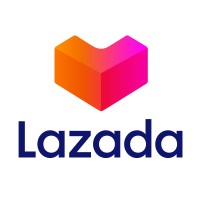
About Lazada Group Founded in 2012, Lazada Group is the leading eCommerce platform in Southeast Asia. We are accelerating progress in Indonesia, Malaysia, the Philippines, Singapore, Thailand and Vietnam through commerce and technology. With the largest logistics and payments networks in the regio
SS&C is a leading global provider of mission-critical, cloud-based software and solutions for the financial and healthcare industries. Named to the Fortune 1000 list as a top U.S. company based on revenue, SS&C (NASDAQ: SSNC) is a trusted provider to more than 20,000 financial services and healthcar

Intuit is a global technology platform that helps our customers and communities overcome their most important financial challenges. Serving millions of customers worldwide with TurboTax, QuickBooks, Credit Karma and Mailchimp, we believe that everyone should have the opportunity to prosper and we wo
Founded in 2003, LinkedIn connects the world's professionals to make them more productive and successful. With more than 1 billion members worldwide, including executives from every Fortune 500 company, LinkedIn is the world's largest professional network. The company has a diversified business mode
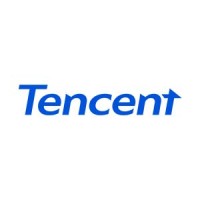
Tencent is a world-leading internet and technology company that develops innovative products and services to improve the quality of life of people around the world. Founded in 1998 with its headquarters in Shenzhen, China, Tencent's guiding principle is to use technology for good. Our communication
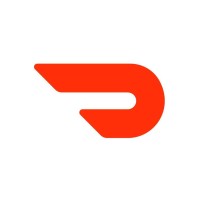
At DoorDash, our mission to empower local economies shapes how our team members move quickly and always learn and reiterate to support merchants, Dashers and the communities we serve. We are a technology and logistics company that started with door-to-door delivery, and we are looking for team membe
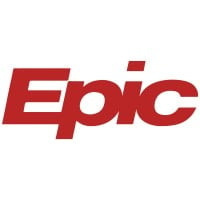
Join us in our mission to help the world get well, help the world stay well, and help future generations be healthier. We hire smart and motivated people from all academic majors to code, test, and implement healthcare software that hundreds of millions of patients and doctors rely on to improve ca
PhonePe Group is India’s leading fintech company, proudly recognized as India’s #1 Trusted Digital Payments* Brand for three consecutive years. Our flagship product, the PhonePe app was launched in August 2016, has rapidly become the preferred consumer payments app in India. In just eight years, Pho
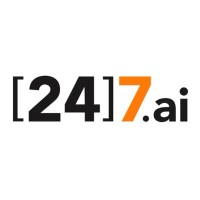
[24]7.ai™ customer engagement solutions use conversational artificial intelligence to understand customer intent, enabling companies to create personalized, predictive, and effortless customer experiences across all channels; attract and retain customers; boost agent productivity and satisfaction; a
.png)
SAP has released an update addressing 18 new vulnerabilities, including several critical flaws related to code execution and data injection.
SAP released its monthly Security Patch Day updates, addressing 18 new security notes and providing two updates to existing ones,...
Join Secure Together New York 2025 by SecurityBridge, featuring SAP cybersecurity insights on AI, quantum security, and zero-trust...
SAP NS2's Ted Wagner said threat intelligence sharing across government and industry builds collective defense no single group can achieve...
Enterprise systems powered by SAP run core business functions—finance, supply chain management, and HR—and for this reason,...
SAP released its October 2025 Security Patch Day fixes, addressing 13 new vulnerabilities and updating four prior notes, with several...
Rated Medium with a CVSS 3.1 score of 5.3, the flaw results from a NULL pointer dereference during ticket parsing, causing memory corruption...
Onapsis, a global leader in SAP cybersecurity and compliance, today announced the launch of a new integration between its flagship Onapsis...
2. Cybersecurity training also enhances incident response. When employees understand the importance of security protocols, they are more likely...

Explore insights on cybersecurity incidents, risk posture, and Rankiteo's assessments.
The official website of SAP is http://www.sap.com.
According to Rankiteo, SAP’s AI-generated cybersecurity score is 759, reflecting their Fair security posture.
According to Rankiteo, SAP currently holds 0 security badges, indicating that no recognized compliance certifications are currently verified for the organization.
According to Rankiteo, SAP is not certified under SOC 2 Type 1.
According to Rankiteo, SAP does not hold a SOC 2 Type 2 certification.
According to Rankiteo, SAP is not listed as GDPR compliant.
According to Rankiteo, SAP does not currently maintain PCI DSS compliance.
According to Rankiteo, SAP is not compliant with HIPAA regulations.
According to Rankiteo,SAP is not certified under ISO 27001, indicating the absence of a formally recognized information security management framework.
SAP operates primarily in the Software Development industry.
SAP employs approximately 133,175 people worldwide.
SAP presently has no subsidiaries across any sectors.
SAP’s official LinkedIn profile has approximately 4,379,062 followers.
SAP is classified under the NAICS code 5112, which corresponds to Software Publishers.
Yes, SAP has an official profile on Crunchbase, which can be accessed here: https://www.crunchbase.com/organization/sap.
Yes, SAP maintains an official LinkedIn profile, which is actively utilized for branding and talent engagement, which can be accessed here: https://www.linkedin.com/company/sap.
As of November 27, 2025, Rankiteo reports that SAP has experienced 7 cybersecurity incidents.
SAP has an estimated 26,564 peer or competitor companies worldwide.
Incident Types: The types of cybersecurity incidents that have occurred include Vulnerability, Breach and Ransomware.
Total Financial Loss: The total financial loss from these incidents is estimated to be $7.10 million.
Detection and Response: The company detects and responds to cybersecurity incidents through an remediation measures with mutual agreement on departure and compensation payout, and remediation measures with patching, remediation measures with applying cisa's advisories, and remediation measures with emergency fix released by sap, and third party assistance with securitybridge (vulnerability discovery & patch development), and containment measures with apply august 2025 sap patch day updates, and communication strategy with sap customer bulletin (restricted access), communication strategy with securitybridge report, communication strategy with public advisory via bleepingcomputer, and incident response plan activated with yes (vulnerabilities patched), and containment measures with software patches released for cve-2025-42944, cve-2025-42937, cve-2025-42910, and remediation measures with users advised to apply security updates immediately, and communication strategy with public advisory via sap security notes, communication strategy with media coverage (e.g., securityaffairs)..
Title: Inappropriate Behavior Incident Leading to CTO Departure
Description: Former CTO Jürgen Müller left SAP due to an 'incident' of inappropriate behavior at a company event, leading to an investigation into allegations of sexual harassment. Müller's departure was mutually agreed upon, and he received a compensation payout of €7.1 million ($7.5 million). The incident resulted in financial loss due to severance payments and could potentially damage SAP's reputation due to the nature of the misconduct and the public scrutiny of executive compensations.
Type: Misconduct
Threat Actor: Former CTO Jürgen Müller
Motivation: Inappropriate behavior
Title: SAP NetWeaver Application Server Java Directory Traversal Vulnerability
Description: SAP's NetWeaver Application Server Java was found vulnerable to a critical directory traversal flaw identified as CVE-2017-12637. This vulnerability allows remote attackers to read arbitrary files, potentially leading to a compromise of sensitive information and system integrity. The flaw, given a CVSS score of 7.5, indicates a high severity risk. Being actively exploited in the wild, the Cybersecurity and Infrastructure Security Agency (CISA) has mandated federal agencies to mitigate this risk urgently by April 9, 2025. Failure to patch or apply CISA's advisories could lead to serious data breaches, affecting customer and organizational data and disrupting significant operational capacities.
Type: Vulnerability Exploitation
Attack Vector: Directory Traversal
Vulnerability Exploited: CVE-2017-12637
Title: SAP NetWeaver Visual Composer Vulnerability Exploitation
Description: A critical vulnerability in SAP NetWeaver's Visual Composer development server allowed an unauthenticated attacker to upload potentially harmful executable binaries, affecting the confidentiality, integrity, and availability of the targeted system.
Date Detected: April 2025
Type: Zero-day attack
Attack Vector: Unauthenticated upload of executable binaries
Vulnerability Exploited: Critical vulnerability in SAP NetWeaver Visual Composer development server
Title: SAP NetWeaver Visual Composer Metadata Uploader Vulnerability
Description: In late April, SAP fixed a severe bug in NetWeaver Visual Composer Metadata Uploader, affecting over 1,200 instances. Multiple ransomware operators, including BianLian and RansomEXX, exploited this flaw. The bug allowed unauthenticated actors to upload malicious executables. SAP also patched a separate critical zero-day vulnerability in NetWeaver server, tracked as CVE-2025-42999, with a severity score of 9.1/10. Both vulnerabilities were abused in attacks since January 2025.
Date Detected: 2025-01-01
Date Resolved: 2025-04-01
Type: vulnerability
Attack Vector: unauthenticated uploadzero-day exploit
Vulnerability Exploited: CVE-2025-42999
Threat Actor: BianLianRansomEXX
Motivation: financial gain
Title: SAP GUI Vulnerabilities Expose Sensitive User Data
Description: SAP GUI, a trusted interface for hundreds of thousands of global enterprises, has been found to be storing sensitive user data with outdated encryption, potentially allowing data breaches. According to Pathlock researcher Jonathan Stross and Fortinet’s Julian Petersohn, a couple of information disclosure vulnerabilities affect the product’s user input history feature in its Windows (CVE-2025-0055) and Java (CVE-2025-0056) versions. The newly disclosed vulnerabilities affect how user-entered data like usernames, national IDs, and bank account numbers are stored locally, either unencrypted or protected with a weak, reusable XOR key.
Type: Data Breach
Attack Vector: Vulnerability Exploitation
Vulnerability Exploited: CVE-2025-0055CVE-2025-0056
Title: Critical SAP S/4HANA Code Injection Vulnerability (CVE-2025-42957) Exploited in the Wild
Description: A critical SAP S/4HANA code injection vulnerability (CVE-2025-42957) is being actively exploited in the wild. The flaw, an ABAP code injection issue in an RFC-exposed function module, allows low-privileged authenticated users to inject arbitrary code, bypass authorization, and fully take over SAP systems. SAP released a patch on August 11, 2025, but unpatched systems remain at risk. Exploitation can lead to data theft, manipulation, privilege escalation, credential theft, and operational disruption via malware or ransomware. SecurityBridge, which discovered and reported the vulnerability, confirmed limited but active abuse and warned of the ease of reverse-engineering the patch due to the openness of SAP ABAP code.
Date Detected: 2025-06-27
Date Publicly Disclosed: 2025-08-11
Type: Vulnerability Exploitation
Attack Vector: NetworkRFC-Exposed Function ModuleABAP Code Injection
Vulnerability Exploited: CVE-2025-42957 (ABAP Code Injection in SAP S/4HANA)
Motivation: Data TheftData ManipulationPrivilege EscalationCredential TheftOperational DisruptionPotential Financial Gain
Title: SAP Fixed Maximum-Severity Bug in NetWeaver (CVE-2025-42944)
Description: SAP addressed 13 new vulnerabilities, including a maximum severity issue (CVE-2025-42944, CVSS score of 10.0) in SAP NetWeaver. The vulnerability is an **insecure deserialization** that could lead to **arbitrary command execution** by an unauthenticated attacker via the **RMI-P4 module** through an open port. The deserialization of untrusted Java objects could compromise the application’s **confidentiality, integrity, and availability**. Two other critical flaws were patched: **CVE-2025-42937** (Directory Traversal in SAP Print Service, CVSS 9.8) and **CVE-2025-42910** (Unrestricted File Upload in SAP Supplier Relationship Management, CVSS 9.0). No attacks in the wild were reported.
Date Publicly Disclosed: 2025-10-15
Type: Vulnerability Disclosure
Attack Vector: Network (RMI-P4 module)Path Traversal (SAP Print Service)File Upload (SAP Supplier Relationship Management)
Common Attack Types: The most common types of attacks the company has faced is Vulnerability.
Identification of Attack Vectors: The company identifies the attack vectors used in incidents through RFC-Exposed Function Module in SAP S/4HANA.

Financial Loss: €7.1 million ($7.5 million)
Brand Reputation Impact: Potential damage due to the nature of the misconduct and public scrutiny of executive compensations
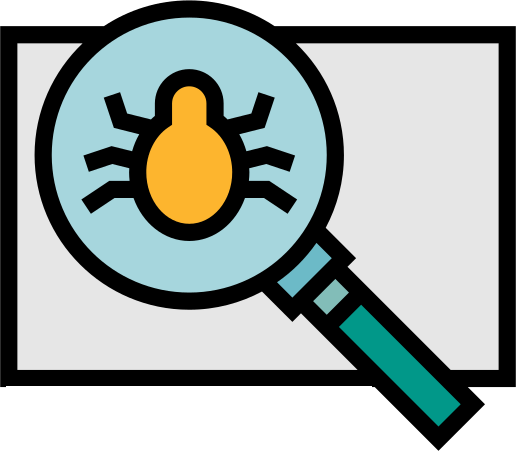
Data Compromised: Customer data, Organizational data
Systems Affected: SAP NetWeaver Application Server Java
Operational Impact: Significant operational capacities disrupted
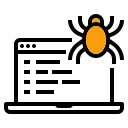
Systems Affected: Systems running the latest SAP service pack

Systems Affected: over 1,200 instances

Data Compromised: Usernames, National ids, Bank account numbers
Systems Affected: SAP GUI Windows versionSAP GUI Java version

Identity Theft Risk: True

Systems Affected: SAP NetWeaverSAP Print Service (SAPSprint)SAP Supplier Relationship Management
Operational Impact: High (potential compromise of confidentiality, integrity, and availability)
Brand Reputation Impact: Potential (due to critical vulnerabilities in enterprise software)
Average Financial Loss: The average financial loss per incident is $1.01 million.
Commonly Compromised Data Types: The types of data most commonly compromised in incidents are Customer Data, Organizational Data, , Usernames, National Ids, Bank Account Numbers, , Sensitive Business Data, Credentials, Potentially Pii and .

Entity Name: SAP
Entity Type: Organization
Industry: Software

Entity Name: SAP
Entity Type: Software Company
Industry: Information Technology
Location: Germany

Entity Name: SAP
Entity Type: Enterprise Software
Industry: Technology
Location: Global
Size: Large

Entity Name: SAP
Entity Type: Enterprise Software Provider
Industry: Technology
Location: Global
Size: Large

Entity Name: SAP SE
Entity Type: Software Corporation
Industry: Enterprise Software
Location: Walldorf, Germany
Size: Large (100,000+ employees)

Remediation Measures: Mutual agreement on departure and compensation payout

Remediation Measures: PatchingApplying CISA's advisories

Remediation Measures: Emergency fix released by SAP

Third Party Assistance: Securitybridge (Vulnerability Discovery & Patch Development).
Containment Measures: Apply August 2025 SAP Patch Day Updates
Communication Strategy: SAP Customer Bulletin (Restricted Access)SecurityBridge ReportPublic Advisory via BleepingComputer

Incident Response Plan Activated: Yes (vulnerabilities patched)
Containment Measures: Software patches released for CVE-2025-42944, CVE-2025-42937, CVE-2025-42910
Remediation Measures: Users advised to apply security updates immediately
Communication Strategy: Public advisory via SAP Security NotesMedia coverage (e.g., SecurityAffairs)
Incident Response Plan: The company's incident response plan is described as Yes (vulnerabilities patched).
Third-Party Assistance: The company involves third-party assistance in incident response through SecurityBridge (Vulnerability Discovery & Patch Development), .

Type of Data Compromised: Customer data, Organizational data

Type of Data Compromised: Usernames, National ids, Bank account numbers
Sensitivity of Data: High
Data Encryption: Weak or None

Type of Data Compromised: Sensitive business data, Credentials, Potentially pii
Sensitivity of Data: High
Prevention of Data Exfiltration: The company takes the following measures to prevent data exfiltration: Mutual agreement on departure and compensation payout, Patching, Applying CISA's advisories, , Emergency fix released by SAP, , Users advised to apply security updates immediately, .
Handling of PII Incidents: The company handles incidents involving personally identifiable information (PII) through by apply august 2025 sap patch day updates, , software patches released for cve-2025-42944, cve-2025-42937, cve-2025-42910 and .

Ransomware Strain: BianLianRansomEXX

Lessons Learned: Critical vulnerabilities in enterprise software like SAP S/4HANA can be quickly weaponized if patches are delayed. The openness of ABAP code makes reverse-engineering fixes easier for threat actors, emphasizing the need for timely patching and proactive monitoring. RFC-exposed function modules are high-value targets for code injection attacks, requiring strict access controls and regular audits.

Lessons Learned: Critical vulnerabilities in enterprise software like SAP NetWeaver can expose organizations to severe risks (e.g., arbitrary command execution) if left unpatched. Proactive patch management and input validation (e.g., deserialization, file uploads) are essential to mitigate such threats.

Recommendations: Patch the vulnerability, Apply CISA's advisoriesPatch the vulnerability, Apply CISA's advisories

Recommendations: Immediately apply SAP's August 2025 Patch Day updates for affected products., Conduct a thorough audit of RFC-exposed function modules in SAP environments., Implement least-privilege access controls for SAP users to mitigate code injection risks., Monitor for unusual activity in SAP logs, particularly related to ABAP code execution., Engage with SAP and SecurityBridge for guidance on securing vulnerable systems., Restrict access to SAP customer bulletins and ensure internal teams are aware of critical vulnerabilities., Consider network segmentation to isolate SAP systems from untrusted networks.Immediately apply SAP's August 2025 Patch Day updates for affected products., Conduct a thorough audit of RFC-exposed function modules in SAP environments., Implement least-privilege access controls for SAP users to mitigate code injection risks., Monitor for unusual activity in SAP logs, particularly related to ABAP code execution., Engage with SAP and SecurityBridge for guidance on securing vulnerable systems., Restrict access to SAP customer bulletins and ensure internal teams are aware of critical vulnerabilities., Consider network segmentation to isolate SAP systems from untrusted networks.Immediately apply SAP's August 2025 Patch Day updates for affected products., Conduct a thorough audit of RFC-exposed function modules in SAP environments., Implement least-privilege access controls for SAP users to mitigate code injection risks., Monitor for unusual activity in SAP logs, particularly related to ABAP code execution., Engage with SAP and SecurityBridge for guidance on securing vulnerable systems., Restrict access to SAP customer bulletins and ensure internal teams are aware of critical vulnerabilities., Consider network segmentation to isolate SAP systems from untrusted networks.Immediately apply SAP's August 2025 Patch Day updates for affected products., Conduct a thorough audit of RFC-exposed function modules in SAP environments., Implement least-privilege access controls for SAP users to mitigate code injection risks., Monitor for unusual activity in SAP logs, particularly related to ABAP code execution., Engage with SAP and SecurityBridge for guidance on securing vulnerable systems., Restrict access to SAP customer bulletins and ensure internal teams are aware of critical vulnerabilities., Consider network segmentation to isolate SAP systems from untrusted networks.Immediately apply SAP's August 2025 Patch Day updates for affected products., Conduct a thorough audit of RFC-exposed function modules in SAP environments., Implement least-privilege access controls for SAP users to mitigate code injection risks., Monitor for unusual activity in SAP logs, particularly related to ABAP code execution., Engage with SAP and SecurityBridge for guidance on securing vulnerable systems., Restrict access to SAP customer bulletins and ensure internal teams are aware of critical vulnerabilities., Consider network segmentation to isolate SAP systems from untrusted networks.Immediately apply SAP's August 2025 Patch Day updates for affected products., Conduct a thorough audit of RFC-exposed function modules in SAP environments., Implement least-privilege access controls for SAP users to mitigate code injection risks., Monitor for unusual activity in SAP logs, particularly related to ABAP code execution., Engage with SAP and SecurityBridge for guidance on securing vulnerable systems., Restrict access to SAP customer bulletins and ensure internal teams are aware of critical vulnerabilities., Consider network segmentation to isolate SAP systems from untrusted networks.Immediately apply SAP's August 2025 Patch Day updates for affected products., Conduct a thorough audit of RFC-exposed function modules in SAP environments., Implement least-privilege access controls for SAP users to mitigate code injection risks., Monitor for unusual activity in SAP logs, particularly related to ABAP code execution., Engage with SAP and SecurityBridge for guidance on securing vulnerable systems., Restrict access to SAP customer bulletins and ensure internal teams are aware of critical vulnerabilities., Consider network segmentation to isolate SAP systems from untrusted networks.

Recommendations: Apply SAP security patches for CVE-2025-42944, CVE-2025-42937, and CVE-2025-42910 immediately., Restrict network access to SAP NetWeaver’s RMI-P4 module and other exposed services., Implement strict file type/content validation for uploads in SAP Supplier Relationship Management., Monitor for unauthorized file modifications in SAP Print Service (SAPSprint)., Conduct regular security audits for deserialization vulnerabilities in Java-based applications.Apply SAP security patches for CVE-2025-42944, CVE-2025-42937, and CVE-2025-42910 immediately., Restrict network access to SAP NetWeaver’s RMI-P4 module and other exposed services., Implement strict file type/content validation for uploads in SAP Supplier Relationship Management., Monitor for unauthorized file modifications in SAP Print Service (SAPSprint)., Conduct regular security audits for deserialization vulnerabilities in Java-based applications.Apply SAP security patches for CVE-2025-42944, CVE-2025-42937, and CVE-2025-42910 immediately., Restrict network access to SAP NetWeaver’s RMI-P4 module and other exposed services., Implement strict file type/content validation for uploads in SAP Supplier Relationship Management., Monitor for unauthorized file modifications in SAP Print Service (SAPSprint)., Conduct regular security audits for deserialization vulnerabilities in Java-based applications.Apply SAP security patches for CVE-2025-42944, CVE-2025-42937, and CVE-2025-42910 immediately., Restrict network access to SAP NetWeaver’s RMI-P4 module and other exposed services., Implement strict file type/content validation for uploads in SAP Supplier Relationship Management., Monitor for unauthorized file modifications in SAP Print Service (SAPSprint)., Conduct regular security audits for deserialization vulnerabilities in Java-based applications.Apply SAP security patches for CVE-2025-42944, CVE-2025-42937, and CVE-2025-42910 immediately., Restrict network access to SAP NetWeaver’s RMI-P4 module and other exposed services., Implement strict file type/content validation for uploads in SAP Supplier Relationship Management., Monitor for unauthorized file modifications in SAP Print Service (SAPSprint)., Conduct regular security audits for deserialization vulnerabilities in Java-based applications.
Key Lessons Learned: The key lessons learned from past incidents are Critical vulnerabilities in enterprise software like SAP S/4HANA can be quickly weaponized if patches are delayed. The openness of ABAP code makes reverse-engineering fixes easier for threat actors, emphasizing the need for timely patching and proactive monitoring. RFC-exposed function modules are high-value targets for code injection attacks, requiring strict access controls and regular audits.Critical vulnerabilities in enterprise software like SAP NetWeaver can expose organizations to severe risks (e.g., arbitrary command execution) if left unpatched. Proactive patch management and input validation (e.g., deserialization, file uploads) are essential to mitigate such threats.

Source: CISA Advisory

Source: Pathlock researcher Jonathan Stross and Fortinet’s Julian Petersohn

Source: SecurityBridge Report on CVE-2025-42957

Source: BleepingComputer Article

Source: SAP Security Bulletin (August 2025 Patch Day)

Source: SecurityAffairs
URL: https://securityaffairs.com/153422/security/sap-fixed-maximum-severity-bug-netweaver.html
Date Accessed: 2025-10-15

Source: SAP Security Notes
Additional Resources: Stakeholders can find additional resources on cybersecurity best practices at and Source: CISA Advisory, and Source: Pathlock researcher Jonathan Stross and Fortinet’s Julian Petersohn, and Source: SecurityBridge Report on CVE-2025-42957, and Source: BleepingComputer Article, and Source: SAP Security Bulletin (August 2025 Patch Day), and Source: SecurityAffairsUrl: https://securityaffairs.com/153422/security/sap-fixed-maximum-severity-bug-netweaver.htmlDate Accessed: 2025-10-15, and Source: SAP Security Notes.

Investigation Status: Ongoing investigation into allegations of sexual harassment

Investigation Status: Ongoing (Limited exploitation confirmed; SAP and SecurityBridge investigating)

Investigation Status: Resolved (patches released; no evidence of exploitation in the wild)
Communication of Investigation Status: The company communicates the status of incident investigations to stakeholders through Sap Customer Bulletin (Restricted Access), Securitybridge Report, Public Advisory Via Bleepingcomputer, Public Advisory Via Sap Security Notes, Media Coverage (E.G. and Securityaffairs).

Stakeholder Advisories: Sap Customers (Via Restricted Bulletin), Enterprise Sap Administrators.
Customer Advisories: Apply patches immediatelyMonitor for signs of exploitationReview SAP security configurations

Customer Advisories: SAP customers urged to apply patches for the three critical vulnerabilities.
Advisories Provided: The company provides the following advisories to stakeholders and customers following an incident: were Sap Customers (Via Restricted Bulletin), Enterprise Sap Administrators, Apply Patches Immediately, Monitor For Signs Of Exploitation, Review Sap Security Configurations, and SAP customers urged to apply patches for the three critical vulnerabilities..

Entry Point: Rfc-Exposed Function Module In Sap S/4Hana,
Backdoors Established: True
High Value Targets: Sap S/4Hana Servers, Business-Critical Data, Credentials,
Data Sold on Dark Web: Sap S/4Hana Servers, Business-Critical Data, Credentials,

Root Causes: Outdated encryption and weak XOR key

Root Causes: Unpatched Sap Systems Vulnerable To Cve-2025-42957, Insufficient Access Controls For Rfc-Exposed Function Modules, Delayed Patching Despite Critical Cvss Score (9.9), Ease Of Reverse-Engineering Abap Code Fixes,
Corrective Actions: Mandatory Patching For All Affected Sap Versions, Enhanced Logging And Monitoring For Abap Code Execution, Access Restrictions For Rfc Function Modules, Regular Vulnerability Assessments For Sap Environments, Collaboration With Sap And Securitybridge For Threat Intelligence,

Root Causes: Insecure Deserialization In Sap Netweaver (Lack Of Input Validation For Java Objects)., Missing Path Traversal Protections In Sap Print Service., Inadequate File Type/Content Verification In Sap Supplier Relationship Management.,
Corrective Actions: Released Security Patches To Address The Vulnerabilities., Enhanced Input Validation Mechanisms In Affected Components., Encouraged Customers To Implement Least-Privilege Access Controls.,
Post-Incident Analysis Process: The company's process for conducting post-incident analysis is described as Securitybridge (Vulnerability Discovery & Patch Development), .
Corrective Actions Taken: The company has taken the following corrective actions based on post-incident analysis: Mandatory Patching For All Affected Sap Versions, Enhanced Logging And Monitoring For Abap Code Execution, Access Restrictions For Rfc Function Modules, Regular Vulnerability Assessments For Sap Environments, Collaboration With Sap And Securitybridge For Threat Intelligence, , Released Security Patches To Address The Vulnerabilities., Enhanced Input Validation Mechanisms In Affected Components., Encouraged Customers To Implement Least-Privilege Access Controls., .
Last Attacking Group: The attacking group in the last incident were an Former CTO Jürgen Müller and BianLianRansomEXX.
Most Recent Incident Detected: The most recent incident detected was on April 2025.
Most Recent Incident Publicly Disclosed: The most recent incident publicly disclosed was on 2025-10-15.
Most Recent Incident Resolved: The most recent incident resolved was on 2025-04-01.
Highest Financial Loss: The highest financial loss from an incident was €7.1 million ($7.5 million).
Most Significant Data Compromised: The most significant data compromised in an incident were Customer data, Organizational data, , usernames, national IDs, bank account numbers, and .
Most Significant System Affected: The most significant system affected in an incident was SAP NetWeaver Application Server Java and Systems running the latest SAP service pack and and SAP GUI Windows versionSAP GUI Java version and and SAP NetWeaverSAP Print Service (SAPSprint)SAP Supplier Relationship Management.
Third-Party Assistance in Most Recent Incident: The third-party assistance involved in the most recent incident was securitybridge (vulnerability discovery & patch development), .
Containment Measures in Most Recent Incident: The containment measures taken in the most recent incident were Apply August 2025 SAP Patch Day Updates, Software patches released for CVE-2025-42944, CVE-2025-42937 and CVE-2025-42910.
Most Sensitive Data Compromised: The most sensitive data compromised in a breach were Organizational data, usernames, bank account numbers, national IDs and Customer data.
Most Significant Lesson Learned: The most significant lesson learned from past incidents was Critical vulnerabilities in enterprise software like SAP S/4HANA can be quickly weaponized if patches are delayed. The openness of ABAP code makes reverse-engineering fixes easier for threat actors, emphasizing the need for timely patching and proactive monitoring. RFC-exposed function modules are high-value targets for code injection attacks, requiring strict access controls and regular audits., Critical vulnerabilities in enterprise software like SAP NetWeaver can expose organizations to severe risks (e.g., arbitrary command execution) if left unpatched. Proactive patch management and input validation (e.g., deserialization, file uploads) are essential to mitigate such threats.
Most Significant Recommendation Implemented: The most significant recommendation implemented to improve cybersecurity was Engage with SAP and SecurityBridge for guidance on securing vulnerable systems., Implement strict file type/content validation for uploads in SAP Supplier Relationship Management., Monitor for unauthorized file modifications in SAP Print Service (SAPSprint)., Conduct regular security audits for deserialization vulnerabilities in Java-based applications., Apply SAP security patches for CVE-2025-42944, CVE-2025-42937, and CVE-2025-42910 immediately., Patch the vulnerability, Restrict access to SAP customer bulletins and ensure internal teams are aware of critical vulnerabilities., Immediately apply SAP's August 2025 Patch Day updates for affected products., Restrict network access to SAP NetWeaver’s RMI-P4 module and other exposed services., Apply CISA's advisories, Conduct a thorough audit of RFC-exposed function modules in SAP environments., Monitor for unusual activity in SAP logs, particularly related to ABAP code execution., Implement least-privilege access controls for SAP users to mitigate code injection risks. and Consider network segmentation to isolate SAP systems from untrusted networks..
Most Recent Source: The most recent source of information about an incident are CISA Advisory, SecurityBridge Report on CVE-2025-42957, Pathlock researcher Jonathan Stross and Fortinet’s Julian Petersohn, SecurityAffairs, SAP Security Bulletin (August 2025 Patch Day), SAP Security Notes and BleepingComputer Article.
Most Recent URL for Additional Resources: The most recent URL for additional resources on cybersecurity best practices is https://securityaffairs.com/153422/security/sap-fixed-maximum-severity-bug-netweaver.html .
Current Status of Most Recent Investigation: The current status of the most recent investigation is Ongoing investigation into allegations of sexual harassment.
Most Recent Stakeholder Advisory: The most recent stakeholder advisory issued was SAP Customers (via restricted bulletin), Enterprise SAP Administrators, .
Most Recent Customer Advisory: The most recent customer advisory issued were an Apply patches immediatelyMonitor for signs of exploitationReview SAP security configurations and SAP customers urged to apply patches for the three critical vulnerabilities.
Most Significant Root Cause: The most significant root cause identified in post-incident analysis was Outdated encryption and weak XOR key, Unpatched SAP systems vulnerable to CVE-2025-42957Insufficient access controls for RFC-exposed function modulesDelayed patching despite critical CVSS score (9.9)Ease of reverse-engineering ABAP code fixes, Insecure deserialization in SAP NetWeaver (lack of input validation for Java objects).Missing path traversal protections in SAP Print Service.Inadequate file type/content verification in SAP Supplier Relationship Management..
Most Significant Corrective Action: The most significant corrective action taken based on post-incident analysis was Mandatory patching for all affected SAP versionsEnhanced logging and monitoring for ABAP code executionAccess restrictions for RFC function modulesRegular vulnerability assessments for SAP environmentsCollaboration with SAP and SecurityBridge for threat intelligence, Released security patches to address the vulnerabilities.Enhanced input validation mechanisms in affected components.Encouraged customers to implement least-privilege access controls..
.png)
Angular is a development platform for building mobile and desktop web applications using TypeScript/JavaScript and other languages. Prior to versions 19.2.16, 20.3.14, and 21.0.1, there is a XSRF token leakage via protocol-relative URLs in angular HTTP clients. The vulnerability is a Credential Leak by App Logic that leads to the unauthorized disclosure of the Cross-Site Request Forgery (XSRF) token to an attacker-controlled domain. Angular's HttpClient has a built-in XSRF protection mechanism that works by checking if a request URL starts with a protocol (http:// or https://) to determine if it is cross-origin. If the URL starts with protocol-relative URL (//), it is incorrectly treated as a same-origin request, and the XSRF token is automatically added to the X-XSRF-TOKEN header. This issue has been patched in versions 19.2.16, 20.3.14, and 21.0.1. A workaround for this issue involves avoiding using protocol-relative URLs (URLs starting with //) in HttpClient requests. All backend communication URLs should be hardcoded as relative paths (starting with a single /) or fully qualified, trusted absolute URLs.
Forge (also called `node-forge`) is a native implementation of Transport Layer Security in JavaScript. An Uncontrolled Recursion vulnerability in node-forge versions 1.3.1 and below enables remote, unauthenticated attackers to craft deep ASN.1 structures that trigger unbounded recursive parsing. This leads to a Denial-of-Service (DoS) via stack exhaustion when parsing untrusted DER inputs. This issue has been patched in version 1.3.2.
Forge (also called `node-forge`) is a native implementation of Transport Layer Security in JavaScript. An Integer Overflow vulnerability in node-forge versions 1.3.1 and below enables remote, unauthenticated attackers to craft ASN.1 structures containing OIDs with oversized arcs. These arcs may be decoded as smaller, trusted OIDs due to 32-bit bitwise truncation, enabling the bypass of downstream OID-based security decisions. This issue has been patched in version 1.3.2.
Suricata is a network IDS, IPS and NSM engine developed by the OISF (Open Information Security Foundation) and the Suricata community. Prior to versions 7.0.13 and 8.0.2, working with large buffers in Lua scripts can lead to a stack overflow. Users of Lua rules and output scripts may be affected when working with large buffers. This includes a rule passing a large buffer to a Lua script. This issue has been patched in versions 7.0.13 and 8.0.2. A workaround for this issue involves disabling Lua rules and output scripts, or making sure limits, such as stream.depth.reassembly and HTTP response body limits (response-body-limit), are set to less than half the stack size.
Suricata is a network IDS, IPS and NSM engine developed by the OISF (Open Information Security Foundation) and the Suricata community. In versions from 8.0.0 to before 8.0.2, a NULL dereference can occur when the entropy keyword is used in conjunction with base64_data. This issue has been patched in version 8.0.2. A workaround involves disabling rules that use entropy in conjunction with base64_data.

Get company history
















Every week, Rankiteo analyzes billions of signals to give organizations a sharper, faster view of emerging risks. With deeper, more actionable intelligence at their fingertips, security teams can outpace threat actors, respond instantly to Zero-Day attacks, and dramatically shrink their risk exposure window.
Identify exposed access points, detect misconfigured SSL certificates, and uncover vulnerabilities across the network infrastructure.
Gain visibility into the software components used within an organization to detect vulnerabilities, manage risk, and ensure supply chain security.
Monitor and manage all IT assets and their configurations to ensure accurate, real-time visibility across the company's technology environment.
Leverage real-time insights on active threats, malware campaigns, and emerging vulnerabilities to proactively defend against evolving cyberattacks.




